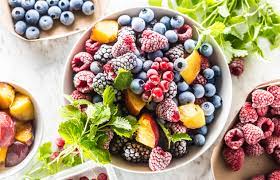
The story
- The environmental minister Mark Spencer has told MPs that there are signs recent rises in the cost of food have reached their peak.
The context
- His comments came after inflation unexpectedly increased in February, with Office for National Statistics (ONS) figures showing food prices hit their highest rate in more than 45 years.
- Mr Spencer did not directly say whether the Government is on track to meet its goal of halving inflation by the end of this year, when he was challenged, although he did say that there are “signs that this is the peak of this food inflation”
He was speaking in the Commons during an urgent question on food price inflation.
Lizzy’s opinion
- As the cost of food continues to rise, it’s understandable to feel frustrated and concerned about the impact on your budget. However, I feel that it’s important to realize that there are lots of reasons why the cost of food is increasing, including supply chain disruptions, inflation, and climate change.
- While these factors are outside of our control, there are still ways to manage the increasing cost of food. One way is to be more mindful of our food choices and purchase items that are in season and locally grown. Another option is to consider alternatives to expensive ingredients, such as plant-based proteins or frozen fruits and vegetables.

Counterpoint
- “A number of media outlets have reported that the recent shortage of some salad and vegetables has been the driver for the increase in food inflation in February but this is not the case.
- “The overall inflation rate increases have been caused by several factors, there are other categories where price increases have been greater than that of vegetables over the past year.
- “These high overall inflation rates are driven by high utility prices and pressures on global supply chains that are being felt across Europe and beyond. Commentators expect the rate of inflation both across the economy and for food and drink to be near its peak.”

What next
- Other countries are also experiencing a cost-of-living squeeze.
- Many of the reasons are the same – increased energy costs, shortages of goods and materials and the fallout from Covid.
- The annual inflation rate for countries which use the euro is estimated to have been 8.5% in February.
- Inflation is falling in the US too, but is still considered high. Prices rose by 6% over the 12 months to the end of February – down from 6.4% in January.
- In response, the US central bank has increased its key interest rate to 5%, up from near 0% a year ago – and the highest level since 2007.
Read more
- Conservative former environment secretary Theresa Villiers said the Government’s measures to support people with the cost of living are “among the most generous in Europe”.
- “But this news on food price inflation is really worrying, so can the minister assure us that the Government is on track to deliver the Prime Minister’s promise to halve inflation by the end of the year?” she said.
- Mark Spencer responded: “We continue to monitor inflation. The Prime Minister has the ambition to reduce inflation.
- “Food prices have driven that inflationary figure over the last month. But the good news is we are starting to see signs that we are at the peak of that. And already, some of those driving costs – like the wholesale price of gas, fertiliser and imports – are beginning to ease back.”
- He also told MPs: “We are seeing signs that this is the peak of this food inflation.”
- The urgent question was raised by shadow environment secretary Jim McMahon, who hit out at Environment Secretary Therese Coffey for not attending the session.
